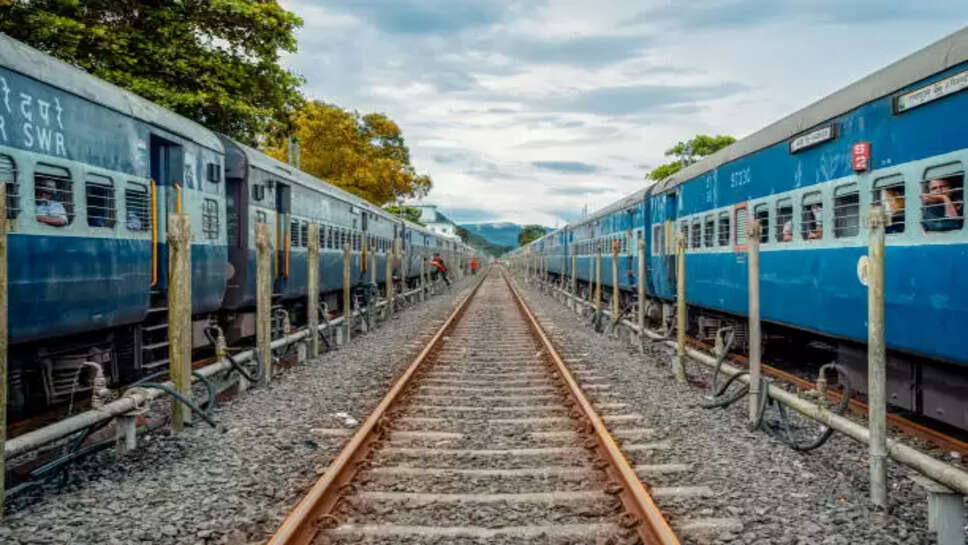Cabinet Nod for Indian Railways’ Line Doubling Projects

In a strategic move aimed at bolstering the freight capacity and operational efficiency of Indian Railways, the Union Cabinet has approved multiple line doubling projects across the country. These projects are set to significantly enhance the network’s freight carrying capability by adding an estimated 49 million tonnes (MT) of additional capacity annually. The approval is a major step towards meeting the growing demand for transportation of goods, decongesting busy rail corridors, and facilitating seamless connectivity between production and consumption centres.
Key Highlights of the Cabinet Decision
The decision to undertake line doubling projects comes as a part of a broader infrastructure push by the government to strengthen India's logistics ecosystem. The approved doubling projects span across several states and are expected to cover over 800 kilometers of rail tracks. These include vital routes which currently operate as single lines, thus restricting train frequency and causing operational delays.
The following are some key highlights:
-
Coverage of More Than 800 Kilometers: The projects collectively aim to double existing single-line sections across different railway zones. This will not only reduce congestion but also allow simultaneous movement of trains in both directions.
-
Estimated Cost: The total investment for the doubling projects is expected to exceed ₹7,000 crore. The funding will be a mix of budgetary support and internal resources of the Indian Railways.
-
Employment Generation: The execution phase of these projects is expected to generate direct and indirect employment opportunities for thousands, especially in rural and semi-urban areas along the rail routes.
-
Freight Traffic Boost: Once completed, these projects will collectively enable an additional handling capacity of approximately 49 million tonnes of freight annually.
Strategic Importance for Freight Operations
One of the biggest bottlenecks in the current railway network is the limited capacity on single-line sections, particularly in resource-rich or industrial corridors. These constraints lead to delays, increased turnaround times, and sub-optimal use of rolling stock. The line doubling projects directly address this challenge by enabling:
-
Seamless Movement of Freight Trains: With dual tracks, railways can operate more trains per day in both directions, thereby improving the throughput.
-
Reduction in Turnaround Time: Doubling lines reduces waiting time for crossing trains, allowing for quicker movement and reduced congestion.
-
Enhanced Operational Efficiency: With less time spent on crossings and fewer stoppages, fuel consumption and maintenance costs are also expected to decrease.
-
Increased Revenues: Higher freight capacity translates into increased revenue for Indian Railways, helping it move closer to financial sustainability.
Economic and Industrial Impact
The regions covered by these projects include important industrial belts, coal-bearing areas, mineral zones, and agricultural regions. The improved connectivity and increased capacity will benefit several sectors:
-
Coal and Minerals: Railways remain the backbone of coal and mineral transportation. With better infrastructure, coal from regions like Jharkhand, Odisha, and Chhattisgarh can be moved more efficiently to thermal power plants across the country.
-
Cement and Steel Industries: These sectors rely heavily on bulk transport. Line doubling in industrial regions will help meet the increasing demand for cement, iron, and steel movements across states.
-
Fertilizer and Food Grains: Agricultural logistics will also benefit significantly, especially during peak harvesting and procurement seasons when demand for rail wagons surges.
-
Container Traffic: The doubling projects will ease movement to and from ports, dry ports, and industrial parks, aiding faster movement of containerised cargo.
Environmental and Sustainability Benefits
Rail transport is one of the most environmentally friendly modes of freight transportation. By increasing the share of goods moved by rail, the government aims to reduce the carbon footprint of logistics. The doubling of lines leads to:
-
Shift from Road to Rail: Faster and reliable rail freight services encourage industries to shift from road-based logistics to railways, reducing traffic congestion and emissions.
-
Lower Fuel Consumption: Reduced idling and better flow of traffic on doubled lines help minimize diesel usage, particularly in non-electrified sections.
-
Reduced Carbon Emissions: Indian Railways aims to become a net-zero carbon emitter by 2030, and such infrastructure expansion supports this vision.
Timeframe and Project Execution
The Indian Railways has already started the groundwork for many of these doubling projects, including land acquisition, feasibility studies, and tendering processes. The Ministry of Railways has set an ambitious goal to complete most of these projects within the next 3 to 4 years.
The use of modern construction techniques, faster execution timelines, and monitoring through digital dashboards will ensure timely completion. The projects are also being aligned with the goals of PM Gati Shakti – National Master Plan for Multi-modal Connectivity, which seeks to improve last-mile connectivity and reduce logistics costs.
Alignment with PM Gati Shakti and National Logistics Policy
The line doubling projects align perfectly with two of the Government of India’s flagship initiatives:
-
PM Gati Shakti: The initiative focuses on integrated infrastructure development. Rail line doubling enhances multi-modal logistics efficiency by ensuring that goods can move swiftly between ports, highways, and industrial zones.
-
National Logistics Policy: By reducing bottlenecks, lowering costs, and improving turnaround time, these projects contribute to the policy’s goals of creating a world-class logistics network in India.
Challenges and Way Forward
While the benefits of line doubling are immense, execution on ground may face certain challenges:
-
Land Acquisition Delays: Acquiring land for expanding railway infrastructure continues to be a hurdle in many regions due to legal and compensation issues.
-
Environmental Clearances: Projects that pass through forest or ecologically sensitive areas may face delays in obtaining necessary clearances.
-
Funding and Resource Mobilization: While internal funding and budgetary allocation are being used, exploring private investments and PPP models can help speed up execution.
